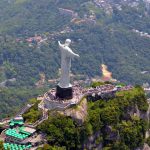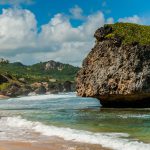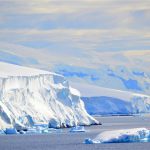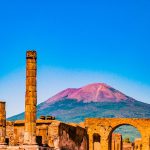Cruise Specialists hosts Steve and Wendy Bodenheimer are taking us along on another amazing journey. We hope this series shows you what you can expect on a Holland America Grand Voyage. First was the kick off, then Costa Rica, the Panama Canal, Chile, Patagonia, Antarctica, Argentina, Brazil, The Amazon, the Caribbean and now the next stop in their Grand South America & Antarctica Voyage (next voyage January 2018).
Did you know that the canary bird is named after the islands, not the other way around? The Canary Islands get their name from the Latin word for dog. Apparently there were many dogs here when this area was discovered!
After 4 visits on past voyages, you’d think we’d be bored. Not a chance.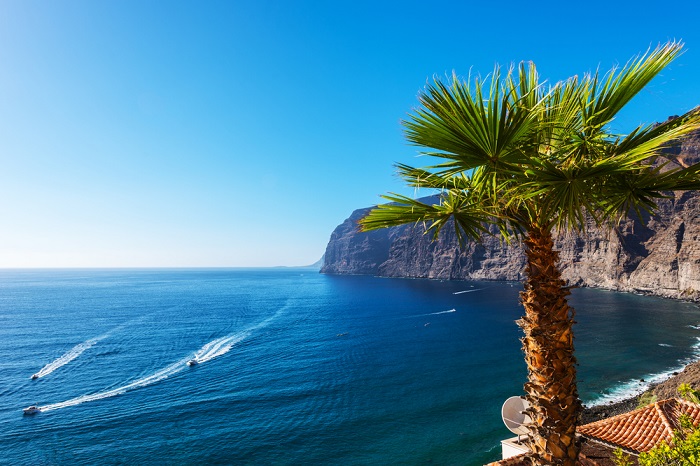
The Canaries are very high on our most-loved ports list. We usually visit 3 of the 7 and while they are all different, they have a few things in common:
- Spectacular natural beauty is abundant – from jagged and remote peaks to hidden valleys to the volcanic soil that creates a lunar landscape.
- They are clean, clean, clean. It must be part of their culture to not litter. Even with thousands of foreign tourists on any given day, there is no garbage in the streets.
- The weather is near perfect. We saw a few drizzles and clouds, but the temperatures were around 70 and great for any kind of outdoor activity.
- Outdoor cafes and restaurants invite you to stop, eat, drink, and relax while watching the passing parade.
La Palma
Our first stop was the island of La Palma. This was a new port for us, so we were happy to just wander and explore. The town of Santa Cruz was just outside as we docked and the scenery was immediately beautiful right outside our windows.
A massive sheared off cliff was right in front of us, surrounded by houses seemingly built right into the rocks. It was early as we made our way up into the residential neighborhoods. At the end of a winding road was the trailhead for a path that wandered over to the other side of the island. 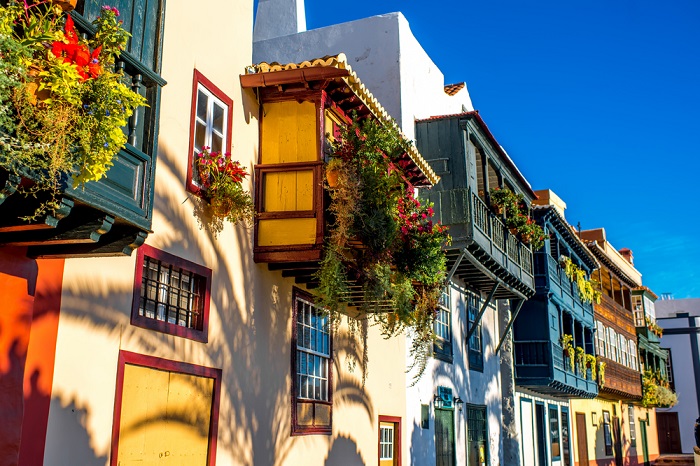
Making our way back to the town, we walked the pedestrian promenade full of shops and cafes, past the town hall and the church. Then we walked the waterfront street, called Avenida Marítima.
This is an important historic part of the town. It is lined with well preserved buildings, each unique, each having wonderful flowered balconies. Large signs describe the lineage of each house. At the end of our walk, we found a café with yummy wood-fired pizza and a carafe of sangria to top off our excellent day.
Tenerife
Stop number two was Tenerife, the largest island in the Canaries. Here we hosted a tour for our Cruise Specialists Guests.
The tour was called Northern Panorama and that is just what we got. Our destination was the dramatic Anaga Mountains, only reachable on very narrow mountain roads. Our amazing young woman bus driver made it look easy as she negotiated the winding narrow roads with some really tight turns in a full size bus!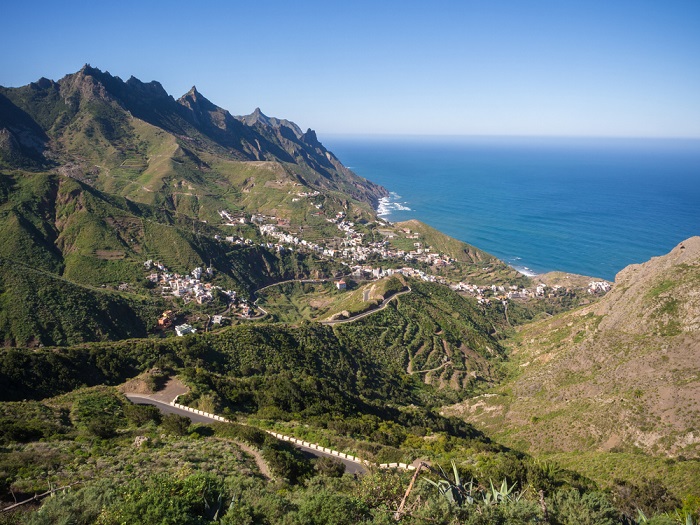
We stopped at the highest point, El Bailadero, before descending into the village of Taganana. There was lots of discussion about what it must be like to live in a place as remote feeling as this, surrounded by jagged mountain peaks. They farm here on what look like dangerous terraces cut right into the mountains. It’s what they have done for centuries, raising crops like potatoes for local consumption. The village has several cafes where most of us sampled the local coffee called a barraquito, made with a home grown liquor.
Then we made our way toward the former Spanish capital city of La Laguna, recognized as a UNESCO World Heritage Site. We walked through the streets with our guide, as she pointed out the architectural details of the well preserved 17th and 18th century houses.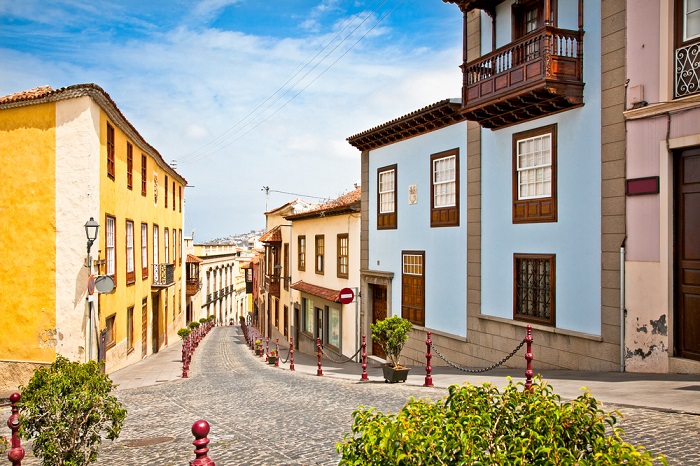
Our final stop was at a cozy but upscale small hotel for a typical Canarian tapas lunch. We got to taste a dozen different small dishes – loved the banana wrapped in pancetta and the potatoes boiled in sea salt with mojo sauce!! Some local wine and beer made the experience complete. A wonderful guide and an exceptional driver helped make this an excellent tour.
Lanzarote
Our last Canary Island stop was Lanzarote, distinctly different looking from Tenerife and La Palma. The climate here is drier and the landscape more desert-like.
The most noticeable feature is the white buildings. All the houses, hotels, condos, etc are uniformly white. Only the color of their doors is different – shades of blue or green. They are a stark contrast to the surrounding mostly brown terrain.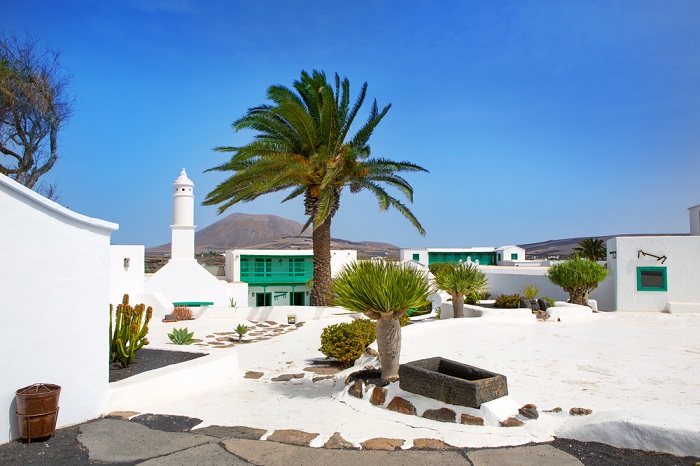
We docked here in the port of Arrecife, a 15 minute shuttle ride from the town. We had previously explored the town with its pleasant promenade, hotels, old fort, and outdoor market.
We’ve also taken tours that visited the historic former capital Teguise and the famous Jardin de Cactus designed by Cesar Manrique. This trip we thought about going out to the Timafaya National Park, location of the Fire Mountain with its lunar landscape. But it would have been a very long and expensive taxi ride.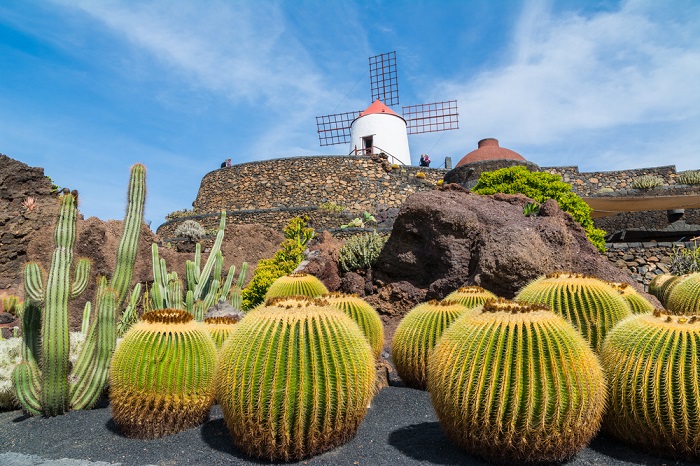
So instead, we opted for a shorter ride to the southern town of Puerto del Carmen. Located just south of the airport, the beachfront promenade goes on for miles. They’ve marked lanes for both walkers and bikers and made the space wide enough to accommodate everyone. It’s also beautifully landscaped with palm trees and cacti set in beds of black sand – quite striking. The beaches themselves are very wide and inviting but relatively unoccupied this time of year.
Our walk started at the end of the airport. A favorite pastime here is standing at the end of the runway and having the planes that are landing come right over your head. The noise is loud and the wind intense – but people seem to love it.
We heard a guest on the ship comment that Lanzarote was a terrible ugly port and why would anyone want to come here? Wow, is he missing the whole point. Even if you don’t think it’s beautiful, which we do, it is so unique that it has to be appreciated for how different it is. Isn’t that why we travel?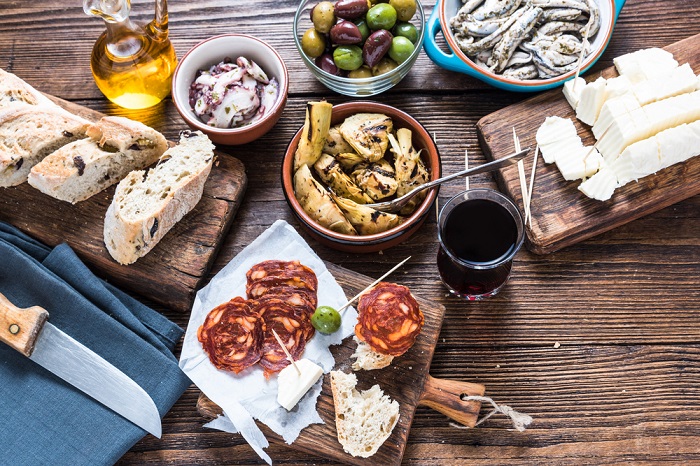
After our day in Lanzarote, we attended a Spanish Tapas Dinner in the specialty restaurant on board. It was a fun evening, filled with unusual dishes served in small tapas-style portions. How about green gazpacho served in a martini glass, or fried beet and goat cheese fondue or the most unusual for us, olives encased in a crust, fried and served on a stick. They called the last one Olive Spherification. Dessert was a sampler plate that included churros with an awesome chocolate dipping sauce.
Learn about next Grand South America and Antarctica Voyage >>
Cruise consultant Matt Caplinger can help answer your questions about cruising Antarctica or a Grand Voyage!
